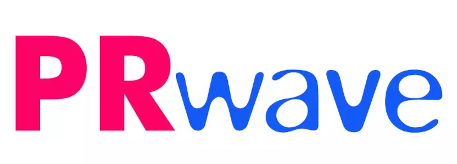 Lavinia Cinca, communication professional, Brussels
Lavinia Cinca, communication professional, Brussels
“Somewhere in the world, right now, someone else is telling a story, a different story. You can’t stop stories being told”. (The Imaginarium of Doctor Parnassus)
Stories, that’s what PR has been all about. I am wondering: how is the entwined social web going to influence the ways PR pros are telling stories about their brands? How is social media changing the landscape of PR? It’s already 100 years since Marshal McLuhan, the prophet of the electronic age was born and we are now living his expectations: The medium is the message! This summer I attended in Barcelona a presentation of Richard Stacy, Owner at Stacy Consulting and former Managing Director at Publicis Consultants Worlwide who has already signalled the emergence of the social media revolution and the fall of the giant press corporations. Stacy points out that the so called Gutenberg era when institutionalized media (newspapers, radios, TVs) used to determine the costs of distribution is now shaded by the dawning of Web 2.0. Its infrastructure entangling Facebook, LinkedIN, YouTube, Twitter, StumbleUpon, Groupon, Wikis has liberated the content from expensive publishing constraints. Each of us has become a channel of distribution, allowing us to say “we rather make media than buy media.”
So, welcome in the post-Gutenberg era! It is about time to return to the “bonfire” lit in the global village, affording to communicators the opportunity to tell stories that appeal to small, but highly engaged audiences. Naturally, we start questioning about the social media implications on PR work and people. For instance, disseminating our messages in digital spaces is different from writing on our own corporate websites. The website belongs to the Gutenberg era it is a one-way platform where PRs have full power over the published content, whereas Web 2.0 is an infrastructure bringing together tools to convey a message that we can no longer control. It is much like oral story telling before the birth of institutionalised literature when several generations of troubadours enriched and changed the original version of legends. Stacy demonstrates that PR is now turning its face to the narratives, to the story (our content) told in different ways (conversation) for different audience that contribute to it and eventually spread the word (community). Richard Stacy shared with us some useful hints for successful PR in the times of social media revolution.
Hint 1: Know your audience and tailor your message accordingly! This has always been a rule of thumb for PR, but now more than ever, a shift from the traditional press releases mass-mailing, to targeted, niche stories is required. We no longer fire messages to an unknown, amorphous mass of people, but we try building trust of small groups based on specific interests. You should always think about your audience and how relevant, visible, and easily identifiable the story about what you are and what you do is. Take as example the Makeup Geek platform sharing branded tutorials for ‘make-up addicts”. Easily discoverable also on Facebook, Twitter and YouTube it is successful due to targeted information and regularly consulting the audience about what advice they should share.
Hint 2: It is not all about what you tell, but also about how you tell it. Listen and monitor to what your publics are already talking about and where. Then, open up the possibilities for your audiences to have their say by choosing the appropriate tools and spokespersons. The best judge of your products will always be your customers. Doritos, the Canadian chips producer understood the importance of involving the audience through a crowd-sourcing campaign. Doritos motivated users to propose an ad deciding the flavour to be either launched or exterminated and gave a financial reward to the winner.
Hint 3: Going even further, Web 2.0 is about the power of the crowd. It’s going beyond company-customers dialogue. The community enhances genuine conversations amongst users and engages them to actively talk about the brand and ultimately, to populate the social space. However, Stacy warns “individuals will form communities to manage their interaction with brands. Individuals will not want to be managed within communities controlled by brands”. We are witnessing a best practice with Google+ which has generated conversation and communities, polarizing customers and getting both positive and negative suggestions. Moreover, users are talking about it even when interacting on competitor networks (Facebook or Twitter).
Hint 4: Considering the entire above, social media is not about having a Facebook page or a Twitter account. It is human relations management rather than tools. To sum up, Stacy says that the key elements of a successful social media strategy stay in monitoring and responding to users’ reactions, delivering content that answers questions and interacting within your social hub. At the end of the day, remember to stick to the basics! “We’re trying to tell real, human stories again. It’s not all about you. It’s about your customers or vendors, your clients and employees too; their stories and how your product or service helps them.” (Davina Brewer)
I would like to thank Richard Stacy for the wonderful presentation in Barcelona and invite you to read his blog to find out more about social media.
Lavinia Cinca is a communication professional living and working in Brussels. She spent the early years of her career in the Romanian Association of Public Relations and continued in the PR department of Enel, in several consultancies and in the press unit of the Committee of the Regions (Belgium). She presented research papers on communication topics at international conferences and has been awarded prizes in national or European competitions. Her expertise includes branding, corporate social responsibility campaigns, international media relations, training or event management. You can follow her on Twitter @laviniacinca and LinkedIN or read her posts on Travel Moments in Time.


